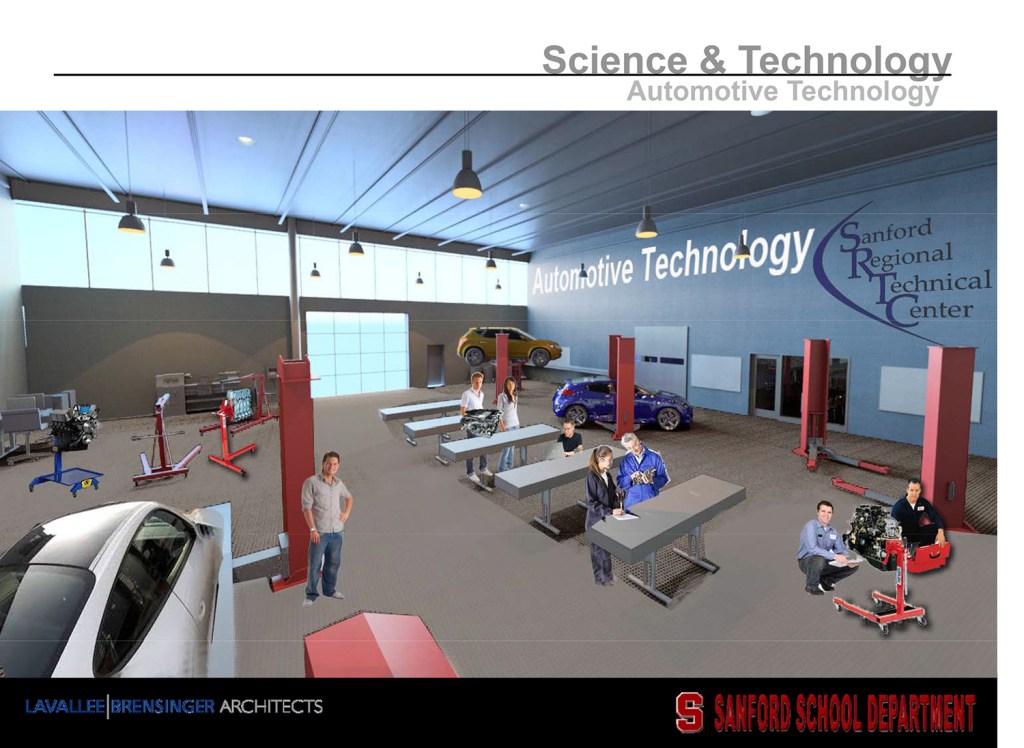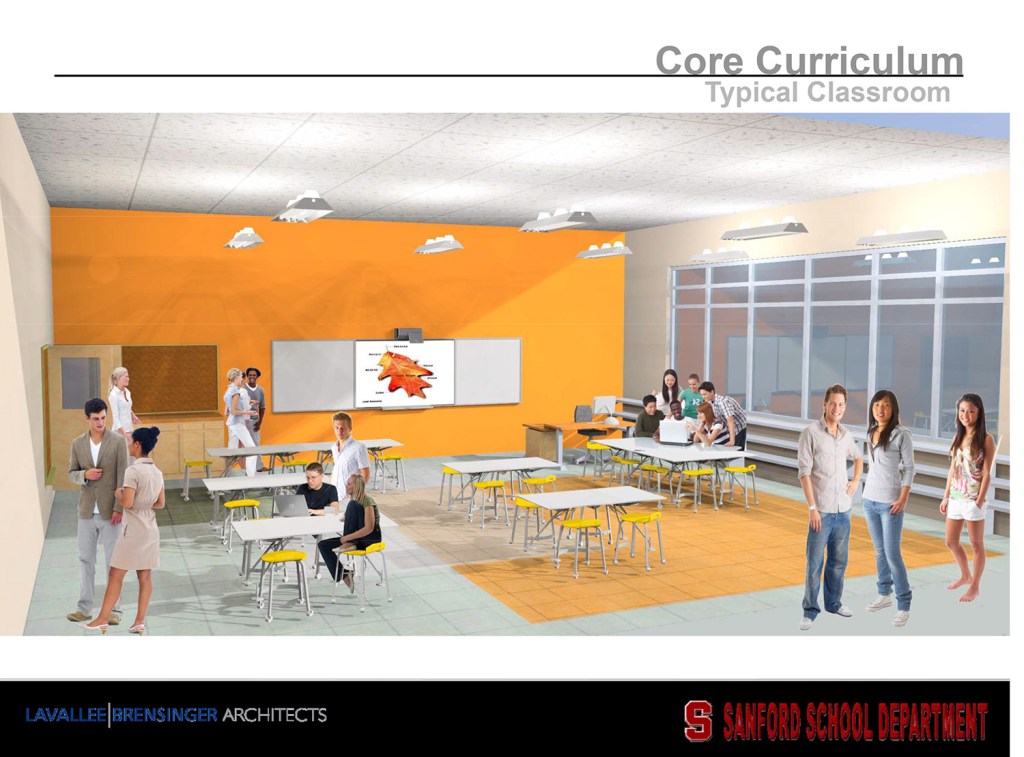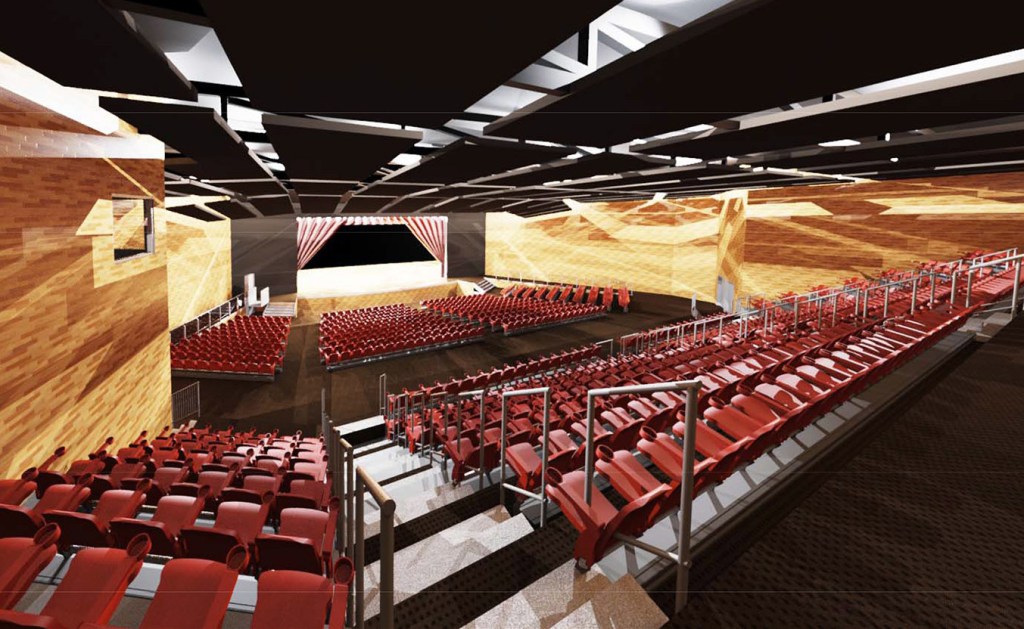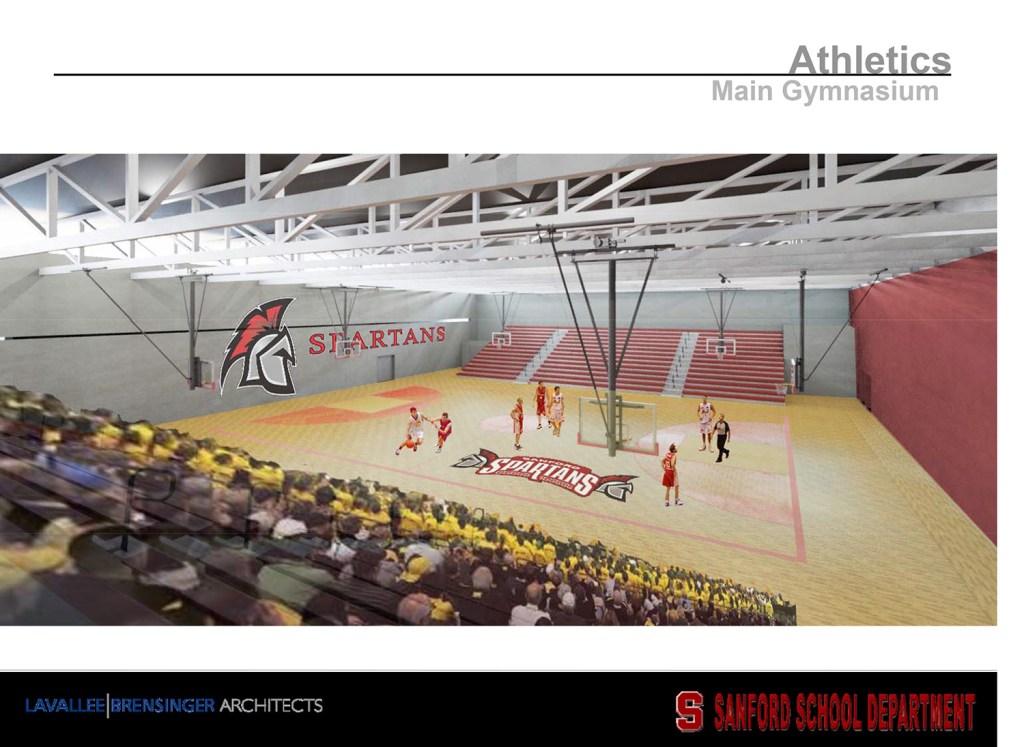Sanford may be the site of the most expensive school construction project in state history if residents there vote Jan. 13 to accept $92 million in state funds for a new high school and technical center.
The project would replace the existing high school and technical center, which officials say are aging and overcrowded. The new school would be located on a 127-acre site in the area between Main Street, Route 4 and the Mousam River, about 3½ miles south of the school’s current location.
Maine Department of Education spokeswoman Samantha Warren noted in an email that the plan integrates the high school with career and technical education programs.
“This is far and away the highest school construction tab picked up by the state, but when completed, this Sanford campus will really serve as a model for how the department envisions other secondary schools being built,” Warren said. “As a result, this project won’t just benefit Sanford students, but those throughout the region and, ultimately, the economic future of our state.”
Sanford Mayor Tom Cote said that “this is a tremendous opportunity for Sanford to have this state-of-the-art facility.”
Sanford Superintendent David Theoharides told state officials that the current high school and technical center are so overcrowded that the school has turned away students from tech programs and has been forced to use 24 portable classrooms for 330 students.
Under the proposal, the high school space would increase by a third, from the current 173,000 square feet to 230,000 square feet. The technical center would increase from 60,000 square feet to 93,000 square feet, house five new technical programs and allow the school to take over technical programs now taught remotely at Noble High School in North Berwick and Marshwood High School in South Berwick.
There are two bond questions before voters about the proposed school, which would have the capacity to house about 1,000 daily high school students and about 500 tech center students.
The first asks whether to approve the basic concept for the school, which includes the state funding and also requires Sanford to issue $7.9 million in local bonds for certain amenities that state funds won’t cover. Those amenities include an 830-seat performing arts center, additional gym space, field lighting, irrigation, outdoor bleachers, a fourth tennis court and a concessions stand.
The second question asks for an additional $2.7 million for enhanced elements that aren’t necessary but that backers hope voters will approve, including a $1 million turf field, more stadium parking, additional bleachers and dehumidification systems.
Voters must approve the first question in order to get the state funds from the Department of Education’s Major Capital Improvement Program. If the second question is rejected by voters, Sanford will still get the state funds for the school.
The school will be organized around four academic fields: science and technology; business and management; arts and communication; and human services. Each will have specialized facilities, including:
• Science and technology: an automotive collision and automotive tech area; a welding and fabrication, and precision manufacturing area; a pre-engineering robotics lab; and a computer lab. Other areas include facilities for learning the building trades and residential wiring.
• Business and management: Culinary arts facilities, including a student-run restaurant open to the public; cosmetology; computer networking; landscaping and greenhouse; and marketing management.
• Arts and communication: Facilities for graphic communication, video production, fine arts, languages and drama.
• Human services: Early education, health occupations, fashion design, firefighting and criminal justice.
Every few years, the Department of Education seeks applications for state funding, evaluates and scores project proposals based on need, and issues a priority list that will be the basis of capital improvement funding decisions for the next few years.
The last full list, with 71 eligible projects, was issued in 2011. That list is then winnowed down to a smaller group of approved projects.
There are currently 12 school projects on the state’s Major Capital School Construction Approved Projects List. In addition to Sanford, they are Morison Memorial School in Corinth; Newport Elementary School; Emerson School in Sanford; Charles A. Snow School in Fryeburg; Nokomis Regional High School in Newport; Mt. Ararat High School in Topsham; Morse High School in Bath; Hall Elementary School in Portland; Martel School in Lewiston; Monmouth Middle School; and Teague Park School in Caribou.
To get funding, each project must go through a years-long, 21-step process that begins with outlining the initial school concept and includes site selection and local approval of the project, which is the purpose of Sanford’s January vote. The bond would pay for future steps, including purchase of the $696,000 site, final engineering design and construction.
There are still several steps ahead for the project, including design and funding approval by the State Board of Education in January 2016, and the final funding approval by the state education commissioner in April 2016. The state funding is spelled out in each state budget, authorizing the state to approve up to a certain amount of debt service each year for school construction. The debt service is currently $126 million.
The Sanford proposal is the biggest state-funded school construction project to date. The two most recent high school projects authorized by the state were also the largest at the time they were approved: In 2011, $57 million for the Mt. Blue High School/Foster vocational center in Farmington; and in 2010, $49 million for Hampden Academy.
Although Sanford’s project is almost twice the cost of the Mt. Blue project, the estimated construction costs per square foot are only slightly higher.
Sanford officials say the project is not expected to cost taxpayers more in additional property taxes, despite the issuance of local bonds, because of savings from ending contracts and leases for portable classrooms, field rental fees and from lower energy costs anticipated at the new school.
If the project is approved, the old building would likely be renovated and used to ease overcrowding at other Sanford schools, Superintendent Theoharides has said. He noted in a message posted to the school website that there are no plans to close other schools.
“What we do know is that once the construction of the new school is complete we will be renovating and reusing the old Sanford High School and Technical Center,” he wrote. “We hope that by renovating and reusing the old high school we can reduce the overcrowding at both Carl Lamb and Margaret Chase Smith (elementary schools) while also providing a much-needed in-town elementary school.”
Send questions/comments to the editors.







